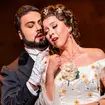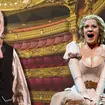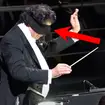Giacomo Puccini: Tosca
Puccini’s approach to opera was, almost overwhelmingly, to focus on the tragic, the forsaken and the painful. And while we should therefore never expect to experience a kind of light relief through the subject matter he chooses, it’s fair to say that in nearly all of his operas, there are moments of jollity or even farce.
The one exception, though, is Tosca. Here is an opera that is almost universally dark and brooding, with tragedy not just dealt with at its conclusion but running like a thread throughout. Right from the start, Puccini makes this abundantly clear: three invasive, arresting chords herald the arrival of the evil Scarpia, the man who seeks sexual gratification with our hero, Tosca, above all else.
Tosca’s real love is Cavaradossi, who sings of her complete beauty in the wonderful tenor aria ‘Recondita armonia’ (‘O hidden harmony’). Tosca’s heartbreaking aria ‘Vissi d’arte’ (‘I have lived for art’) is similarly exquisite – and all the more moving when heard in the context of the whole opera. It is at this point that she has just volunteered to give up her own life for the sake of saving Cavaradossi.
The opera ends with the unnecessary death of both lovers, and the beauty of the music seems to belie the horror of what is taking place on the stage. It is surely impossible to experience Tosca and yet not be greatly moved.
Recommended Recording
Plácido Domingo (tenor) as Cavaradossi; Leontyne Price (soprano) as Tosca; Sherrill Milnes (baritone) as Scarpia; John Alldis Choir; New Philharmonia Orchestra; Zubin Mehta (conductor). RCA: 82876 707832.
Illustration: Mark Millington


















